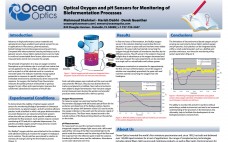Fed-batch and perfusion culture are two dominant modes of operation for mammalian-cell-culture based processes. Challenges in the industry (such as competitive products for the same indication or desired cost reductions) are forcing many to explore new production options. Increasingly popular is the application of the ATF™ System to generate ultra high viable cell concentrations (>100m cells/ml) for a “concentrated” or “intensified” process. The use of the ATF System in a typical concentrated fed-batch process is shown which has generated a…
Year of Publication
Improving influenza vaccine quantification; a comparative study of SRID and SPR
Reliable analytical tools are valuable for economical process development, production, and batch release of vaccines. The current method recommended by the European Pharmacopoeia and WHO for determination of influenza virus titer ¬ single radial immunodiffusion assay (SRID) is straightforward and easy, but leaves plenty of room for improvement when it comes to assay variability and speed of analysis. In addition to having low sensitivity and precision, the method is both time-consuming and quite labor-intensive. In this study a Biacore™ assay…
Sartorius Stedim Biotech Filtration Trials with SAFC Ex-Cell Hydrolysate Fusion
SAFC has launched EX-CELL® CD Hydrolysate Fusion, the first fully chemically defined media supplement of its kind in the industry. Sartorius Stedim Biotech and SAFC Biosciences have recently announced a wide-ranging joint cooperation agreement to serve their customers. As a consequence of this effort, a range of 0.2 ÎĽm & 0.1 ÎĽm sterilizing grade filters from different membrane materials were tested for throughput & biological activity post-filtration. This paper provides an insight into superior total throughput performance of the Sartorius…
Critical aspects for mixing of stratified solutions in vertical bags
With increasing use of single-use, disposable fluid processing systems, concerns of mixing arise in processes such as protein concentration, clarification and diafiltration. For some operating conditions of flow rate, solution viscosity or flow path configurations, protein solutions may become stratified in vertically-oriented hanging bags. This can cause decreased efficiency in cross flow applications. In this study, we modeled a stratified solution and tested the influence of these various operating conditions using ReadyCircuit* 2-D pillow bags. Even with viscous materials, flow…
Optical Oxygen and pH Sensors for Monitoring Biofermentation Processes
Advances in high-performance sensor materials and optoelectronics have enabled optical sensors for use in markets including the life sciences, environmental, food and beverage, process control and biotechnology. Compared with traditional electrochemical sensing techniques such as galvanic, paramagnetic and fuel cell sensors, these optical sensors can be made in small and customizable form factors such as probes and self-adhesive patches. The sensors also have fast response, provide long-term stability and are chemically inert. This experiment demonstrates the viability of optical sensors…
Facing the Challenges in Bio-Pharmaceutical Production
Much attention has been given to ion exchange (IEX) media as a means to improve productivity as a result of increasing demand for higher efficiency on the downstream process. Until recently, strain optimisation for high productivity and upstream purification were the bottlenecks for most bio-processes. However, with the progress made in recent years, titers in fermentation processes have increased significantly. Obviously, this increased volumetric productivity will help reducing the cost of goods, but it also has an impact on the…






